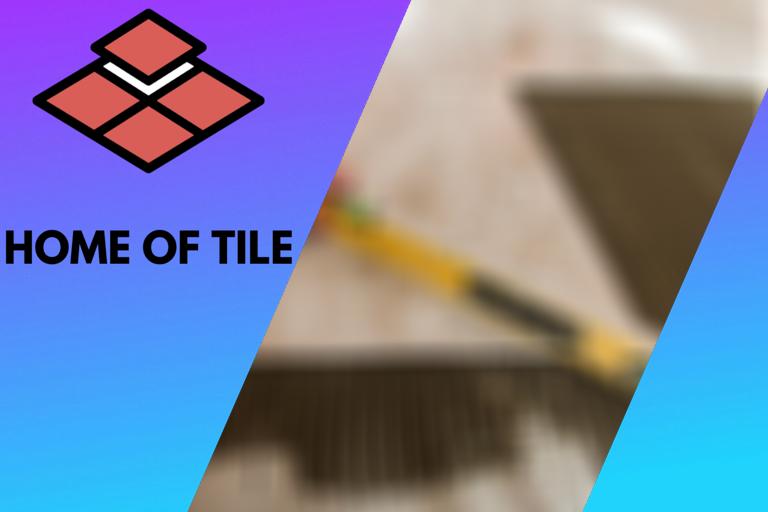Tiling And Underfloor Heating: 8 Things You Should Know
Tiling over a heated underfloor system is becoming very popular with homeowners because of the tile’s heat-retaining capacity, making the heating system more effective. When you hear the word tiling, it’s most likely that you imagine the kitchen or bathroom. Due to their water resistance and easy-to-clean properties, they are a popular choice. But with the growing popularity of underfloor heating systems, people have become fond of placing tiles in other rooms.
Tiling over a floor heating system is a perfect choice because of the high thermal mass and the high heat resistance capacity. This means tiles preserve more heat and provide a warmer environment that lasts for a longer time than other floorings. Tiled floors have a heating capacity of over 84°F, which means heaters having over 20W/ft² of output can be used.

This article will provide you with brief descriptions of tiling over different heating systems. Tiles can be installed over any underfloor heating system, radiant floor heating, water underfloor heating, heating mats, and even heating cables.
Contents
- 1 Tiling with Underfloor Heating, what are the most common issues?
- 2 Tiling Over Radiant Floor Heating, what types of tiles should I use?
- 3 Tiling over Tiles with Underfloor Heating, is this a good option?
- 4 Tiling over Underfloor Heating, is this a good idea?
- 5 Tiling over Underfloor Heating Cables, some helpful tips and common pitfalls
- 5.1 ● Choosing a Suitable Adhesive:
- 5.2 ● Secure Cables:
- 5.3 ● Always Cover Heating Cables:
- 5.4 ● Opt for a Plastic Trowel:
- 5.5 ● Be Gentle While Spreading Adhesive:
- 5.6 ● Use an Ample Amount of Adhesive:
- 5.7 ● Check the Position of the Tiles:
- 5.8 ● Cut the Tiles in Another Space and Not in the Installation Room:
- 5.9 ● Use a Dust Sheet/Paper:
- 5.10 ● Pre-Check the Heater Setting:
- 5.11 ● Follow the Estimate Time Given Before Starting the Heater:
- 6 Tiling over Underfloor Heating Mats
- 7 Tiling over Water Underfloor Heating, some helpful tips
- 8 Turning on Underfloor Heating After Tiling or when not used for some time.
Tiling with Underfloor Heating, what are the most common issues?
Tiling with underfloor heating can result in tile movent due to thermal expansion and contraction. Be careful that you do not damage the heating wires when using a floor leveler and during tiling. Ensure that the adhesive and grout are cured.
Tiling with underfloor heating has a few issues related to it. Therefore, it’s important to carefully and correctly install the tiles over the heating system to avoid cracks and wire damages. The most commonly experienced issues are as follows.
● Tile Movement as a Result of Thermal Expansion and Contraction
Tiles have a lower expansion rate than the adhesives and screed used, but as they’re made from somewhat of the same materials, this means their expansion rate is also similar. With the expansion of the base, tiles can be moved slightly from their position, leading to the grout joints being stretched. The nature of products made of cement is naturally weak, meaning tension can cause movement and cracks on the tiles.
● Trowel Damaging the Wires
Damages caused during tile fitting on underfloor heating systems are the most commonly occurring issue. The wires can be accidentally cut with a trowel when it’s covering the surface with adhesives.
● Adhesive & Grout Not Cured
As grout and adhesives involve water, their curing process takes time. This is why the heating system should not be switched on while the tiles are being placed. They should be kept off until the adhesive and the grout are cured completely.
● Protect wires or pipes when using Floor Leveler on Electric Underfloor Heating and Underfloor Heating Pipes
Care has to be given with electric heating wires and water floor heating pipes when you use a floor leveler. There are several solutions to do this. Popular are:
- Protect wires: To protect wires when the adhesive is being applied, a floor leveler can protect the wires by fully covering them.
- Pipes: Cover pipes with up to 10mm by using a polymer-based leveling screed.
Tiling Over Radiant Floor Heating, what types of tiles should I use?
In general, ceramic tiles, natural stones, and porcelain tiles are the best options for tiling on underfloor radiant heating systems. The properties of those tiles help to create a perfect room climate.
There are not many floorings installed over radiant heating systems because of the high amount of heat this system generates; therefore, tiles are the best choice.
Ceramic and porcelain tile are an ideal option for radiant floor heating systems. The mineral-based nature of tiles helps in better heat conduction and preservation. In addition, tiles don’t degrade nor rot, as they don’t contain any organic product when there is a leak in the hydronic system. As soon as the radiant system is turned on, the tile tends to heat up shortly after preserving the heat after the system is turned off.
Tiling over Tiles with Underfloor Heating, is this a good option?
In general, tiling over already installed tiles on an underfloor heating system is not recommended. The additional layer of tiles will make a good heat transfer difficult.
Many walls and floors use porcelain and ceramic tiles. These are famous for being a perfect option when you have an underfloor heating system. But when you want to lay new tiles, it is not recommended to tile over them. The transfer of heat through two layers of tiles will be low. It is recommended to carefully remove the current tiles and replace them with the new ones.
Tiling over Underfloor Heating, is this a good idea?
In general, tiling is one of the best flooring options when you use underfloor heating. However, the installation of tiles over an underfloor heating system requires proper inspection and following specific steps.
Tiling over underfloor heating systems is very popular and an excellent choice. Most people find the type of heating superior to most other types of heating. Experts suggest that ceramic or porcelain tiles are the best option as they are heat resistant, providing the consumer a well-heated flooring system.
Tiling over Underfloor Heating Cables, some helpful tips and common pitfalls
In general, tiling over underfloor heating cable is a process that requires care and precision, as cables are sensitive and can be damaged easily. You can find some helpful tips and common pitfalls below:
● Choosing a Suitable Adhesive:
The adhesive used for tiling must include a chemical elasticity. The best choice is a two-part flexible adhesive.
● Secure Cables:
Make sure that the wiring cables are fully secured by taping.
● Always Cover Heating Cables:
It’s highly recommended to use a latex self-leveler when covering the heating cables before tiling over mosaic slate or similar tiles.
● Opt for a Plastic Trowel:
Using a trowel made of plastic is a good way to avoid damage. Avoid any contact between the trowel and the heating cables in the adhesive applying process.
● Be Gentle While Spreading Adhesive:
Comb the adhesive gently around the cables in the same direction as they are placed if a notched trowel is being used. The angle of the trowel should approximately be 45 degrees to the floor.
● Use an Ample Amount of Adhesive:
The adhesive should be used in a sufficient amount to avoid any hollow spaces or voids under the tiles.
● Check the Position of the Tiles:
If you have a tile that isn’t positioned correctly, carefully lift it to avoid any damage to the heating cables. Don’t lift the tiles after the adhesive has dried. This might result in damaged heating cables.
● Cut the Tiles in Another Space and Not in the Installation Room:
Never cut or store tiles on top of the heating cables. Clean any dust or chippings to keep the floor from being contaminated while you tile.
● Use a Dust Sheet/Paper:
Using a dust sheet or piece of carpet as a “crawl-board” can help in preventing any damage to the heating cables that might occur due to your knees or feet during the tiling process.
● Pre-Check the Heater Setting:
Check the resistance of the Heater through a multimeter from time to time, if possible. In the case of an open circuit (no reading on the multimeter), there is something wrong with the heating mat.
● Follow the Estimate Time Given Before Starting the Heater:
Follow the instructions of the adhesive and tile manufacturer and grout the floor accordingly. Do not switch the Heater on until the tile adhesive has fully dried. (Miniumum 7 days).
Tiling over Underfloor Heating Mats
The installation of tiling underfloor heating mats requires good care and precision. The steps to follow are:
● Step 1: Do a Demo:
Dry lay your tiles right onto the heating mat. Place your first tile against the measured floor to position it right on the borderline. Start laying the following tiles evenly to get a well-adjusted installation.
● Step 2: Cut Tiles With a Wet Saw:
Use a wet tile saw for cutting the tiles that are to be fitted at the corners of the floor.
● Step 3: Stacking Tiles:
Stack the tiles in the opposite order of installation and keep them near you.
● Step 4: Thin Layer of Thin-Set:
Spread a thin and even layer of thin-set mortar onto the underfloor heating mat. Skim the mortar gently with the flat edge of the trowel all over the heating mat.
● Step 5: Comb Gently:
Turn the trowel, so the notches face the mortar. Gently comb the mortar in one direction by pulling the trowel towards you. Just skim the top of the mortar.
● Step 6: Do as Planned:
Press the tiles into the mortar in the same pattern you planned in your dry test. Set a level on top of every two or three tiles to ensure the height is the same. Use a rubber mallet to tap any high tiles gently deeper into the mortar. Pry any lower placed tile using the trowel edge, apply more mortar to its back, and then reset it.
● Step 7: Leave for 24 Hours:
Tile yourself backward out of the room and let the mortar cure for at least 24 hours.
● Step 8: Grouting:
Position the grout float at an angle of 45-degrees and spread the grout, and move it in several directions to properly pack the grout in between the joints. Scrape off the extra grout by turning the float to 90 degrees and dragging it diagonally across the tiles.
● Step 9: Allow Grout to Dry:
Let the grout dry for 10 minutes, then wash the surface of the tiles. Wash the tiles using a dampened grout sponge in circular motions and wash the sponge frequently. Let the grout fully dry for 24 hours.
Tiling over Water Underfloor Heating, some helpful tips
Considerations before tiling over water underfloor heating:
- Check if the screed is dry.
- Is the screed damaged?
- Check if the screed surface is clean and free from contaminants.
- See if the screed is flat, level, and smooth.
- Make sure a suitable primer is used.
The flooring must be properly primed and insulated for an efficient underfloor water heating system. Enough space should be left to accommodate piping. To do this, you might have to raise the level of the finished floor, or if you have a thick floor, the route for the pipes can be milled in the concrete. This makes the installation of a water underfloor heating system easier in a new build, as these adjustments can be considered from the beginning. But if you have a thick concrete floor, the installation, including milling, can be done in a day.
Turning on Underfloor Heating After Tiling or when not used for some time.
Gradually increase the heating system’s temperature if the system is new or not used for an extended period. This prevents damaging the tiles and the heating system beneath it from shocking.
After installation and tiled recently, turning on the underfloor heating system is something that most people are looking forward to. But you have to be careful with using the heating system at full capacity too quickly. Similar if the heating system has not been utilized for a long time, like in the summer, gradually increase the temperature. This helps to avoid damaging the tiles and preventing the heating system beneath it from shocking. Here are some consideration to remember when you’re thinking of turning it on:
● Check the Underfloor Heating Control Valve:
Make sure to check the control valve on the underfloor heating system. The lowest setting should be 95 degrees Fahrenheit, increase the temperature slowly and gradually. The maximum temperature is 150 degrees Fahrenheit, depending on the system.
● Avoid Turning it on While Screed is Still Wet:
Be careful if gypsum/anhydrite screed is used. If the anhydrite screed is still wet (“the only way to check is for a screed test”) and you happen to turn the heating on, this might force the remaining water out of the screed, before the setting is complete. This will result in the tiles cracking and also reduce the screed’s strength, possibily resulting in the failure of the heating system.
● Check the recommended tile temperature:
To be on the safe side, it’s suggested to check the recommended tile underfloor heating temperature with the tiling manufacturer.







